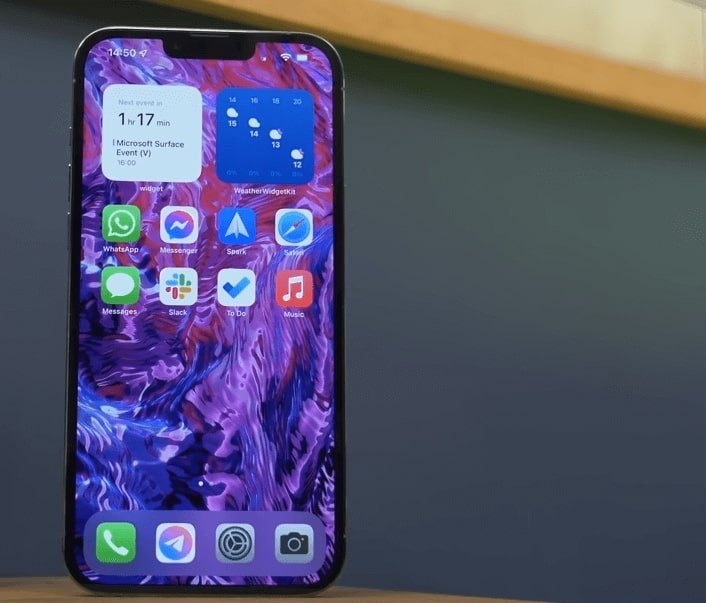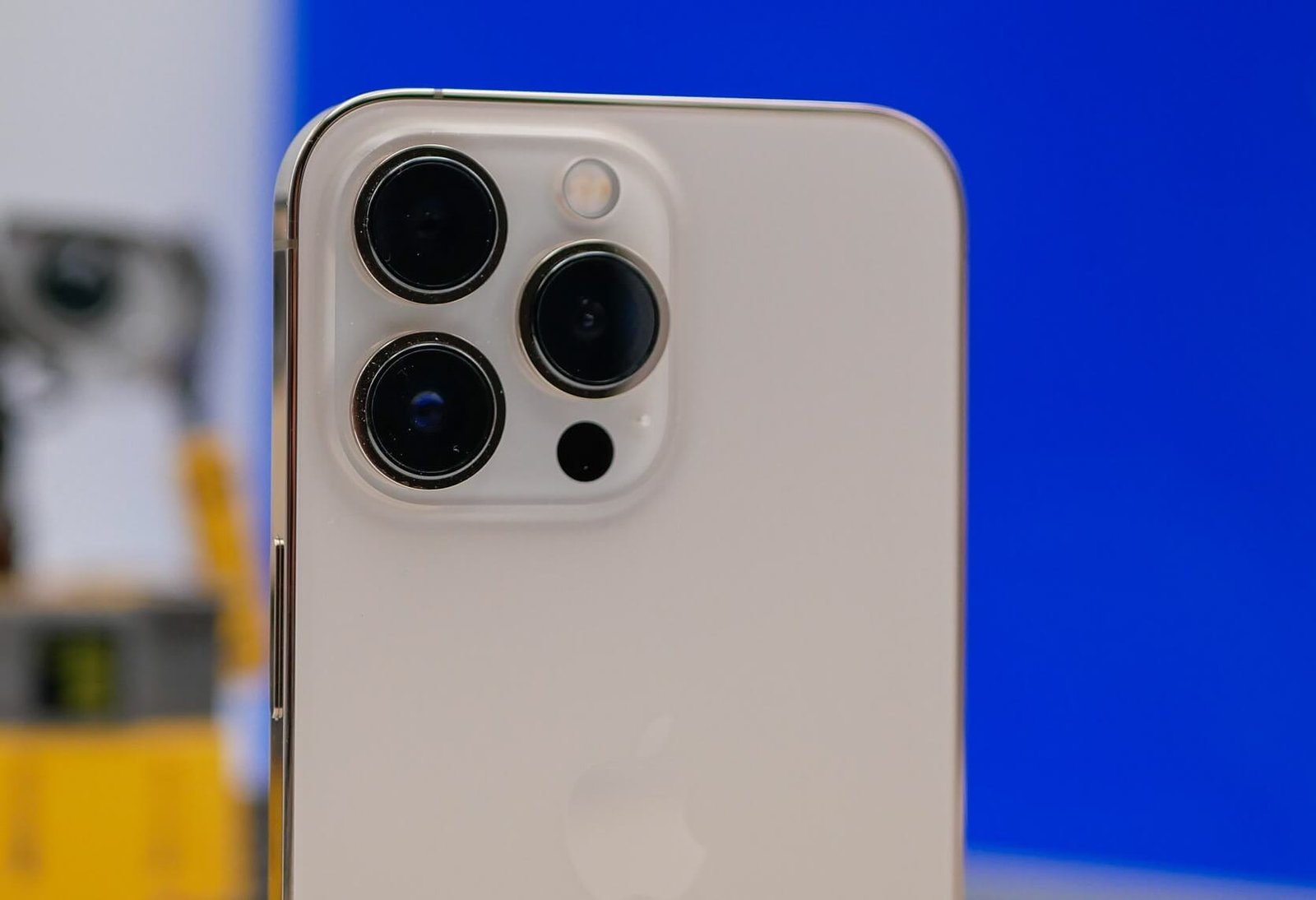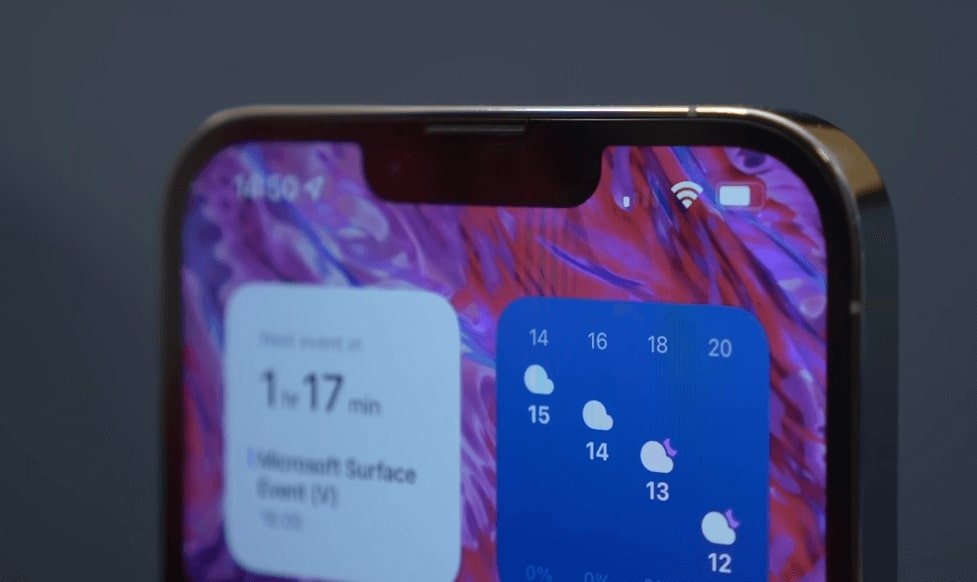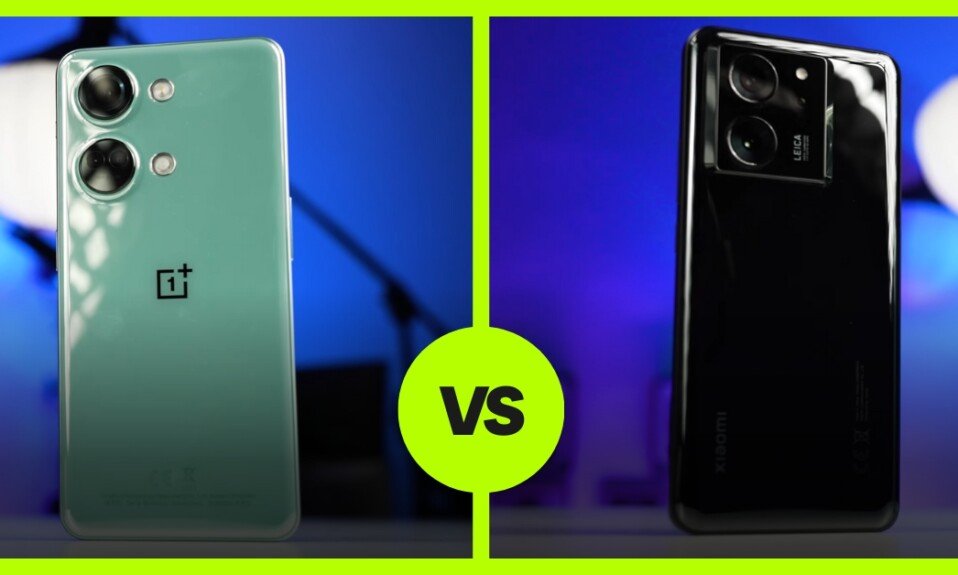With the pandemic last year, Apple’s iPhone 12 arrived a little late, especially in two parts. This year, Apple is taking advantage of a return to normal somewhere to launch all of its new iPhone 13s simultaneously. On these new games, we may split the new iPhone 13 into two ranges: the iPhone 13 small with the iPhone 13 and the iPhone 13 Pro with the iPhone 13 Pro Max. Why? Because, other from screen size and battery capacity, the iPhone 13 small is identical to the iPhone 13, and the iPhone 13 Pro is identical to the iPhone 13 Pro Max.

Today, we’re looking at the iPhone 13 Pro Max variant, The design which is very identical to its predecessors. In that case, the iPhone 13 Pro max has several new features that will thrill the most tech nerds, such as a reduced notch, the same photo block as the iPhone 13 Pro Max, improved battery life, and, most importantly, a ProMotion screen, which is synonymous with 120Hz. We’ve had a week with the new iPhone 13 Pro, and it’s time to give our thoughts.
| PROS | CONS |
| Powerful A15 Bionic chip | AC adapter not included |
| Super Retina XDR display | Fingerprints on stainless steel |
| 120Hz ProMotion technology | |
| Design, finish and IP68 | |
| Excellent battery life |
Specification
| Model | iPhone 13 Pro Max |
| $ | CHECK PRICE |
| Software | iOS 15 |
| Processor | Apple A15 Bionic |
| RAM | 6 GB |
| GPU | A15 Bionic 6-core CPU 5-core GPU 16-core Neural Engine |
| Storage | 128GB, 256G, 512GB or 1TB storage No memory expansion |
| Screen | Super Retina XDR with ProMotion 6.7 inches Definition 1284×2778 Density 458ppp Dolby Vision HDR10 DCI-P3 1000 nits (1200 nits for HDR) True Tone Haptic Touch Notch Ceramic Shield Oleophobic coating |
| Design | Stainless steel surround Frosted glass back – IP68 |
| Colours | Graphite Gold Silver Alpine Blue |
| Camera | Main sensor of 12 MP Standard 26mm and Aperture f / 1.5 100% of Focus Pixels Telephoto sensor 3x of 12 MP Telephoto 77mm and Aperture F / 2.8 Ultra wide-angle sensor of 12 MP FoV 120 ° and Aperture F / 1.8 LiDAR Scanner Photographic Styles Deep Fusion True Tone Flash Smart HDR 4 Portrait Mode Night Mode – Panorama Mode (63 MP) JPEG and HEIF format Apple ProRAW UltraHD video capture up to 60fps Apple ProRes up to 4K at 30fps 8MP photo while 4K recording Optical stabilization Slow down to 240fps at 1080p Front sensor of 12 MP Aperture f / 2.2 Portrait mode Animoji and Memoji 3D face recognition Smart HDR 4 Front video capture in UltraHD up to 60fps Electronic stabilization Slow-motion in 1080p to 120fps Retina Flash |
| Audio | Stereo speaker Dolby Atmos Dolby Digital Plus No 3.5mm jack |
| Battery | Fast Charging (50% in 30 minutes on a 20W charger) Lightning port USB 2.0 MagSafe wireless charging up to 15W Qi wireless charging up to 7.5W |
| Connectivity | Face ID Bluetooth 5.0 WiFi 6 1x nano-SIM 2x eSIM 4G LTE 5G |
| Dimension | 160.8 x 78.1 x 7.65 mm |
| Weight | 238g |
Design
Between the iPhone 12 Pro Max and this 13 Pro Max, the design has changed so little. There is always a smartphone of such high quality available. The strapping is made of aluminium, and the glass remains as strong as a glass back.

On the front, we notice the screen, predominant. However, the device enhanced with a notch on its upper part. However, the end has reduced by 20%, which is certainly not exceptional but allows for Face ID. The edges of the screen are still fine, although the metal edge duplicates the edges of the screen.

The quality is always perfect and there, as always with Apple. However, we regret that the steel edges will scratch easily, although this is not the only smartphone in this case.
On the left edge are the volume adjustment buttons. These are present in the form of two separate and independent buttons; it’s perfect for me. Apple and Oppo are among the rare manufacturers to offer this configuration on most of their smartphones, which is much more ergonomic than having the buttons on the right.

It does not leave us since the first iPhone, the two-position slider, allows you to put the iPhone in silent mode or reactivate the ringtone. The latter is always convenient, effortless to use, and it has been an absolute pleasure to find it on all iPhone since the first of the name. Below the volume buttons, the SIM roof has moved to the left since the last version of the smartphone.
The device lock / unlock button is located on the right. However, unlike the Redmi Note 10 5G on Android devices, the device lacks an inbuilt fingerprint sensor. Apple, in fact, did not want to include fingerprint sensors on the iPhone 13 Pro Max.

We find the loudspeaker for listening to music on the lower edge, accompanied by the Lightning port, allowing charging and data transfer. The primary microphone for calls is also there, and that’s it, no headphone jack on this iPhone 13 Pro Max. Apple was the initiator of this disappearance with the iPhone 7, the first of the Apple smartphones to remove this connection seen as obsolete by the manufacturer.

Nothing at all on the upper edge. The photo module, imposing and bulky, is located on the rear, with 3 photosensors, LiDAR, and a flash divided into 4 LEDs. The secondary microphone can also be found here. There is no ugly legal notice on the back; everything is neatly engraved on one side.
The iPhone 13 Pro Max is well finished, like every Apple product.
Display
The OLED screen is now a standard at Apple and its smartphones. Needless to say, therefore, that this year again, the iPhone 13 Pro offers an OLED screen. Consequently, we find the Super Retina XDR screen with an impressive contrast ratio, a brightness of 1000 nits (against 800 on its predecessors) and a protective layer of Ceramic Shield.

All for a pixel density of 457 DPI. The screen adopts a 19.5: 9 ratio, unlike many Android smartphones, which adopt 16: 9. However, the screen only occupies 87% of the surface of the device, the fault of the notch!
If indoors, we will not see a difference; outdoors, we will see the contribution of this new light. The brightness sees its maximum brightness even reach 1200 nits to manage the different contrasts better for HDR content.
Apple has finally opted on a 120 Hz display for the iPhone, and it’s not too late! This screen is called “Pro Motion” it automatically adjusts to the content you’re watching. For example, there is no need to force it for a fixed internet page; we will stay on 10 Hz; in any event, there is no need for more, but as soon as we touch the screen, the frequency will increase.
In terms of glass, Apple reintroduces its Ceramic Glass, which is scratch resistant and absorbs a bit less impact. However, in our experience, the iPhone 12 Pro Max has fallen so many times without a shell that it has never cracked or broken. It does not come with a tempered glass/screen protector from Apple.
Camera
In absolute terms, the photo unit of the iPhone 13 Pro uses the same principles as those of its predecessor. But if we focus on the technical side, we will notice that Apple has made significant changes. There are no big surprises at first glance on the photo block since we find the three most classic cameras: an ultra-wide-angle, a main wide-angle, and a telephoto. And yet, Apple offers significant changes. We start with the primary camera, accommodating a new 12 Megapixel sensor with 1.9-micron pixels and a lens with an impressive aperture of F / 1.5.

This all equate into better low-light performance. So, for comparison, the iPhone 13 Pro recovers up to 49% more light than the iPhone 12 Pro Max or 2.2 times more light than the iPhone 12 Pro. We find stabilization on the sensor on the two iPhone 13 Pro, which was only available on the iPhone 12 Pro Max last year.
If we locate the LiDAR scanner, which can be used for both Augmented Reality and focusing in low light circumstances (for night portrait mode, for example), Apple took the chance to upgrade its ultra-wide-angle with a bigger sensor and a brilliant lens with a F / 1.8 aperture. This leads to an additional 92 percent of light captured over its predecessor. However, this super wide-angle lens may also be utilised for macro photography. Finally, the telephoto now has a focal length comparable to 77mm or a 3x optical zoom (2x on the 12 Pro and 2.5x on the 12 Pro Max). Because it’s longer, you lose some brightness with a lens that only opens at F / 2.8 (against F / 2.4 previously).

Deep Fusion technology, which is always quicker and enables for more efficient post-production processing, is present on the technological side. The Smart HDR version 4 provides for a better interpretation of the lighting in the case of a significant discrepancy. Portrait mode has been enhanced to further isolate the subject from the backdrop. And, of course, we have the management of the Apple ProRAW format and for those who did not follow everything, and to put it simply, until now, when we took photos in RAW on any smartphone, it was up to the user to do all the post-production, and we were losing all the benefits of automated, computer-aided post-production.
Apple’s ProRAW allows you to have the flexibility of the RAW format but with the modifications that the camera would have made on a more traditional file. As a result, we now have access to what Apple calls Photographic Styles. Simply said, they are not filters, but instead recipes that allow you to add a style to a photo; yet, unlike a basic filter, the style adjusts to the picture; it’s rather subtle. However, it gives extra and welcome control for the most demanding users.






In the selfie side, we find the same hardware as on the iPhone 12 Pro, with a wide-angle lens and a 12 Megapixel sensor. FaceID technology is also used by Apple for a more realistic Portrait mode. Apple, like last year, is using its Deep Fusion technology to boost selfies. It’s still 4K at 30fps for selfie videos and slow-motion in 1080p at 120fps for slow-motion. We even recall the phrase “Slowfie,” which Apple no longer uses.

And finally, on the video side, let’s keep it simple, the iPhone 13 Pro continue on the same line by once again being benchmarks with stunning image quality, as well as the most impressive video stabilization. With the new sensors, the iPhone 13 Pro is even more efficient in low light conditions, and there is always excellent dynamics, which allows having even more details in high contrast areas.
Performance
The iPhone 13 Pro Max has an A15 Bionic chip, which offers up to 50% more performance than the competition and 55% more than last year’s version. With this, 6 GB of RAM, the GPU of the A15 Bionic, which is an SoC that brings everything together. The 16-core Neural Engine processor is also there to assist the chip in games in particular.
iPhone 13 Pro Max is available with 128GB, 256GB, 512GB, or 1TB of storage.
Regarding iOS 15, As we’ve seen with previous iPhones, Apple was usually comfortably two steps ahead in the power of its Operating systems, but we have to accept that Qualcomm and Samsung are on their way back and closing the gap. The new Apple A15 Bionic SoC is a racehorse and confirms Apple as one of the leaders in the SoC market. When compared to its predecessor, Apple consistently promises greater power and reduced energy usage. The iPhone / iOS combination has always worked flawlessly, and everything has always been superfluid on a daily basis, regardless of the programme loaded.
GeekBench
The iPhone 13 Pro Max has a GeekBench score of 4,116, which is higher than the majority, if not all, Android devices.

Antutu
The iPhone 13 Pro Max, or any iPhone for that matter, does not achieve perfection on Antutu. Indeed, given the lesser amount of RAM compared to Android devices, the results are lower. However, this is not the reason it would be less effective. The iPhone 13 Pro Max has an Antutu score of 686,081 points.
Even with its powerful GPU, it manages to produce impressive performance results. The graphical skills, on the other hand, will be shown in a few lines; they are fantastic.
3DMark
The iPhone 13 Pro Max is excellent everywhere. However, we regret not using its 120 Hz screen again in all applications if they still have to become compatible little by little.

Battery Life
Last year, the iPhone 12 Pro and the iPhone 12, in general, offered a little less battery life compared to their predecessors. This year, with larger batteries and a more economical chip, we end up with amazing battery life. With the iPhone 13 Pro, we recover more or less the battery of an iPhone 12 Pro Max. We let you imagine with an iPhone 13 Pro Max, which breaks longevity records. We had between 6 to 7hours on the screen during the test period, which is good.
As we said above, the charger in the box is not included, but of course, the iPhone 13 Pro remains compatible with 20W fast charging. Added to this is fast wireless charging up to 15W. Yes, we know Android smartphones are doing much better this year with wired and wireless recharges even up to 120W. Finally, we will note the Magsafe, which, using a magnet, allows wireless charging always to be well-positioned when the wireless charger is compatible, like that of Apple with a power of 15W.
IOS 15
iOS is always a pleasure to use. While the interface was already superfluid in 60 Hz, it’s much more delightful in 120 Hz adaptive; that’s what makes you feel good about using it. iOS, too, is a user-friendly operating system that has influenced both Xiaomi and Huawei. Unlike other operating systems/overlays, you never feel annoyed.

The settings are excellent, and everything is simple. However, some users may feel iOS to be overly easy in comparison to Android. It is possible to restrict the screen at 60 Hz, but you must go to specific settings that are not visible to all users. You can activate specific functions, take a screenshot, or lock the iPhone by double-tapping the rear of the device.
The system is easy to use, but what sets it apart from Android is the consistency with other Apple products if you already own a Mac, Apple Watch, Apple TV, or HomePod / Mini.
Sound quality
Apple spends a lot of time and effort improving the sound quality of its products. The iPhone 13 Pro Max does, in fact, have higher audio quality than its predecessors, which is quite normal. Moreover, the sound is louder and of higher quality. This increase in volume does not bother me, but it does need one thing.
The device must not saturate at maximum loudness. This is not the case; even at maximum level, the sound does not saturate or sizzle.
The call speakerphone has been raised slightly, making more area for Face ID and hence reducing the notch. However, this does not distract from its ergonomics and ease of use for calls on a regular basis.
Connectivity
Of course, the iPhone 13 Pro Max is compatible with 5G, Wi-Fi 6 and with all the latest standards. It has NFC, but as always with Apple, its use is limited to Apple devices (HomePod Mini, for example) or payment with Apple Pay.
Security
There is no fingerprint sensor on this iPhone 13 Pro Max. Indeed, since the iPhone X, the fingerprint sensor no longer has its place on the iPhone. Face ID replaces Touch ID, to the delight of some, even if others appreciate it less.
Face ID takes up a little less space on this new version but is still just as fast and efficient. The significant advantage, we remind you, is the simple fact of unlocking a smartphone in the dark, in the middle of the night, ideally and without having the maximum brightness in the face.
The other significant advantage is a security system that unlocks the smartphone correctly, not a front camera. Showing a photo is more than enough to open the smartphone without asking any questions. These are the two main advantages of Face ID.
Conclusion!
The iPhone 13 Pro Max is Apple’s best smartphone yet in terms of size, performance, and photography. We like the fact that the pricing stays unchanged compared to the previous edition, as well as the interesting features.



